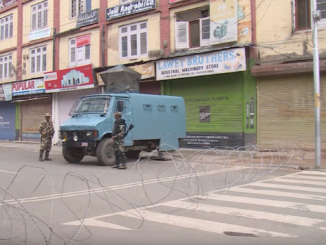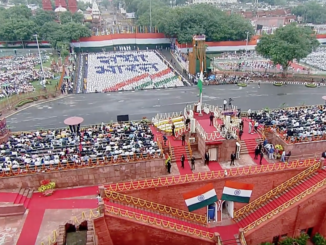
Many international observers view the ongoing military developments in South Asia as part of a ‘triangular competition,’ linking India’s conventional and nuclear modernization with those of China and Pakistan. These three countries are expanding their capabilities, but at a distinctly different pace and to pursue diverse political and security objectives, which could best be described as two separate sets of dyads between India-China and India-Pakistan, and not necessarily a result of a triangular competition.
A brief review of nuclear motivations of the three states would help differentiate between their respective political and security outlook, besides providing a better understanding of why India-China nuclear dyad may not have much substance, as compared to the India-Pakistan nuclear competition. This also explains why the exaggerated security concerns from China are helpful and often (mis)used by India to justify its military expansion, which in turn affects Pakistan’s security interests.
India and China started their nuclear pursuits in the early 1950s during a period of extreme cordiality of their bilateral relations, which was often described in a local Hindi parlance as ‘Hindi-Cheeni-Bhai Bhai,’ meaning that India and China are both ‘brothers.’ Interestingly, this may have some semblance with the contemporary expression of an ‘iron brothers’ which is commonly used to describe the current China-Pakistan relationship.
China’s primary aim to embark on the nuclear weapons program was to prevent nuclear blackmail from the United States and the former Soviet Union, and not due to regional security environment. Chinese leadership considered these weapons as a tool used by the established nuclear powers for political coercion, and therefore, acquisition of nuclear capability was viewed as necessary to prevent nuclear blackmail. Nuclear weapons, however, were not considered as useable and seen only as ‘paper tiger.’ This also explains China’s long-held position on No First Use (NFU) of nuclear weapons against other countries.
India’s primary motivation to embark on its dual-purpose nuclear program, on the other hand, was to gain recognition as a major power and to be recognized as one of the equals. This was also reflected in PM Nehru’s earlier speeches in the parliament where he gave his vision of future India that must build its place as per its potential, and the critical role that nuclear weapons could have in defining India’s status.
In support of Nehru’s vision, Homi Bhabha, who is considered as the father of India’s nuclear program and very close to Nehru, had stated as early as 1958 that India can build an atom bomb within few months, provided the political leadership gives a go ahead. These statements may have been intended to promote institutional and bureaucratic interests and to boast aboutIndia’s technological advancements, but it does indicate that India was on its way to a dual-track nuclear program even before China started its nuclear journey.
If China was indeed a major security concern, then it is incomprehensible why Indian leadership did not immediately build nuclear weapons, despite having the technological know-how after their 1962 border skirmish with its larger neighbor. China’s first nuclear test of 1964 also failed to trigger a serious debate within India for an independent nuclear deterrent. Instead, India waited for another 10 years before testing its first nuclear weapon, and that too was also labeled as a Peaceful Nuclear Explosion (PNE), mainly to avoid international criticism, since there was no plausible justification to build nuclear weapons. It took another 24 years before India formally declared itself as a nuclear weapon state in 1998 by conducting a series of tests and claiming it to be ‘India’s due, the right of one-sixth of human-kind.’ This brief history reveals the fact that India’s principal driver was ‘prestige’ and not security.
India has allocated $ 60 billion in its last defense budget, which is six times more than Pakistan’s defense allocation of $ 9.6 billion and almost four times less than China’s military spending of $ 228 billion. It was tenth in terms of military expenditures in 2007, and by 2017 became the fifth, and is now the largest importer of arms. Despite this massive increase in spending, it would be a long way before India could credibly threaten China, but the growing conventional asymmetry between India and Pakistan is likely to strain India-Pakistan deterrence dyad further, forcing the latter to increase its reliance on nuclear weapons.
As Robert Kaplan, writes in his book, India’s rivalry with China is a relatively new phenomenon, and ‘it is a rivalry with no real history behind it.’ This may be true for now, but as India grows in its size and influence, China may emerge as one of the main competitors, but this is unlikely to lead to a military conflict due to their growing and inter-dependent economic interests with bilateral trade of more than $84 billion between the two countries.
As was seen during the 2017 Doklam crisis, both countries remain reluctant to entangle in a border dispute unnecessarily and have tried to resolve their differences through dialogue. Such episodes, however, are useful for India’s image, as it serves to build its credentials of a country willing to confront China and emerge as an essential player in the U.S. ‘Asia pivot’ strategy. This enables India to extract concessions from the United States and other western powers that are skeptical of China’s rise, but it would be unrealistic to expect that it would be willing to confront China at the behest of the outside powers at the cost of its own economic and security interests.
Despite these realities, India has built a dominant narrative that its ongoing military developments, including the expansion of its naval capabilities that include the Submersible Ballistic Nuclear Submarine (SSBN) capability and other naval platforms, are intended to counter growing Chinese influence in the Indian Ocean region. India’s first SSBN that has been built with the Russian assistance is capable of carrying ballistic missiles with a limited range of 750 km that may not be sufficient to target Pakistan’s main cities and are definitely much lesser than what it would require to threaten mainland China credibly.
The recent military crisis between India and Pakistan may have severely dented India’s image of a credible military power and a potential rival to contain China’s rise. India’s decision to launch a ‘non-military’ surgical strike across the Line of Control (LoC) that led to a tit-for-tat response from Pakistan, has caused significant reputational cost to the Indian military and its political leadership. It may have undermined India’s claim of a leadership role in the region.
Pakistan that has a significant conventional disadvantage vis-à-vis India has demonstrated that it continues to remain a potent challenge, thus making it difficult for India to de-hyphenate its security equation from Pakistan. India is likely to overcome its structural and institutional deficiencies due to massive military spending, but it is not sure if it would be able to completely de-hyphenate its security equation from Pakistan. Till then, the regional competition would continue to remain as two different sets of asymmetric dyads and not a triangular contest.
Dr. Adil Sultan is a Visiting Research Fellow at King’s College London.
![]()




Be the first to comment